MODEL:
THE PARAGON MICROSCOPE
DATE: c. 1900 (c. 1891-1910)
MAKER: JAMES SWIFT & SON
SIGNED: J. SWIFT & SON, LONDON
DESCRIPTION:
 This Wale limb microscope, which is well made, is supported by a special foot in which the grooved limb glides
for inclination. The microscope can be clamped at any degree of inclination via a knurled knob on the right side
of the foot. The foot is actually one part as opposed to many other smaller Wale limb instruments (including the original) that have two parts grasping the microscope limb between them. The grooved limb slides between two sets of four points, the depth of which is controlled by screws on each side of the support of the foot. The shape of the foot provides extra clearance under the stage for ease of manipulation of the substage apparatus. The foot is signed
This Wale limb microscope, which is well made, is supported by a special foot in which the grooved limb glides
for inclination. The microscope can be clamped at any degree of inclination via a knurled knob on the right side
of the foot. The foot is actually one part as opposed to many other smaller Wale limb instruments (including the original) that have two parts grasping the microscope limb between them. The grooved limb slides between two sets of four points, the depth of which is controlled by screws on each side of the support of the foot. The shape of the foot provides extra clearance under the stage for ease of manipulation of the substage apparatus. The foot is signed J. Swift & Son, London
.
The substage attaches via a dovetail fitting, to be completely removable if desired. It has focusing by rack and pinion and centering adjustments. There are two condensers. The simpler condenser uses a 1 inch objective, (which is readily removed and replaced), for optics and has a filter holder and iris. The second is the Swift Universal Condenser
, complete will all attachments. The plano and concave mirror is on a gimbal that is attached to a slide on the swinging tailpiece that is separate from the substage condenser support.
Coarse focus is by diagonal rack and spiral pinion, while fine focus, on the left side of the microscope is Swift's patented Climax
fine adjustment, the control knob being horizontal and very close to the coarse adjustment knob.
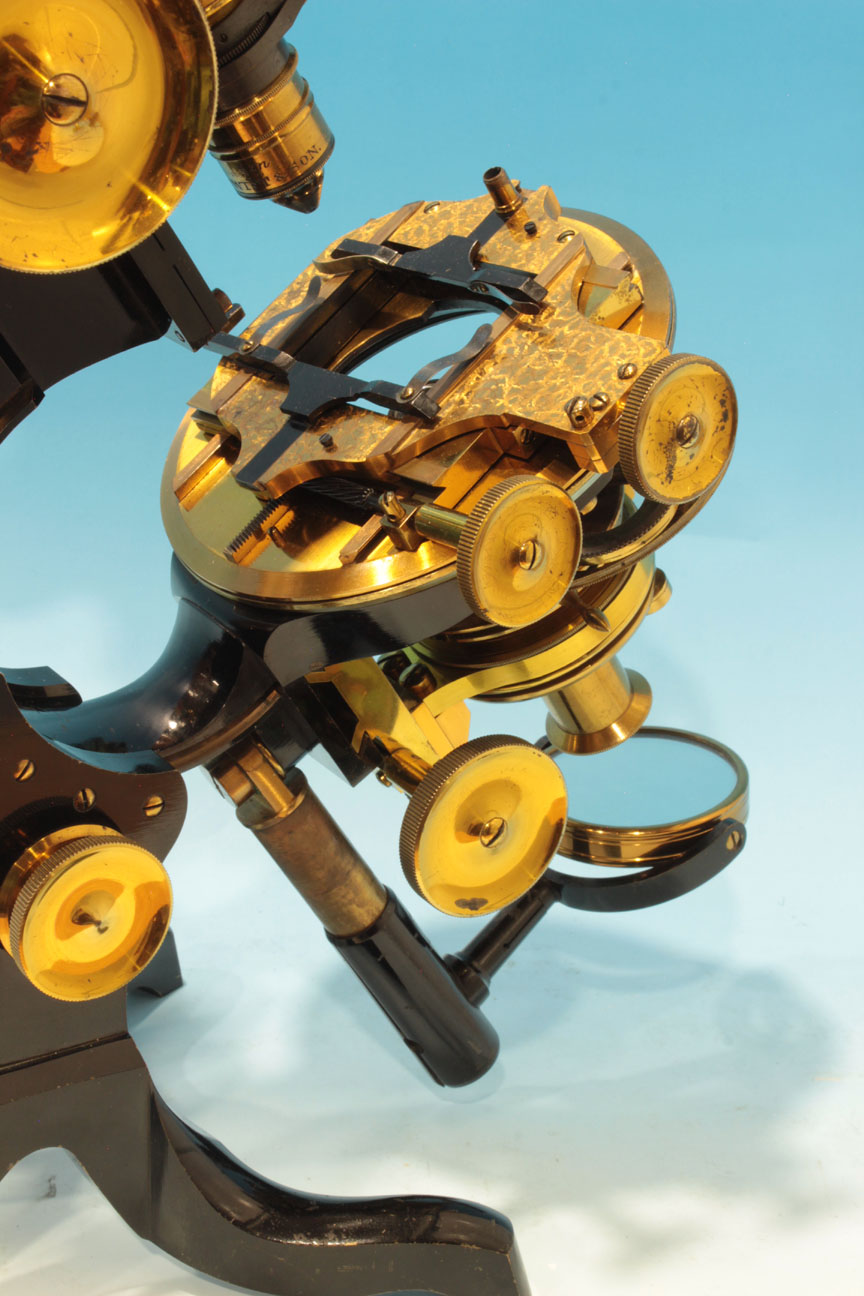
The stage can rotate 360 degrees manually and it has separate controls for X and Y motion. Back and forth (Y-axis) motion is by diagonal rack and spiral pinion in the center, while left-right motion(X-axis) is by worm screw. The surface of the mechanical stage has a decorative finish. Two moveable black slide holders are present, which slide in dovetail fittings. One has spring clips to push against the slide the other with clips to hold it down. there is a hinged slide register on one side of the latter. One of the two slide-holders has a upright brass fitting for a stage forceps or other similar apparatus.
Like most Swift instruments, this microscope is provided with many adjustments for wear. There is a double nosepiece objective changer.
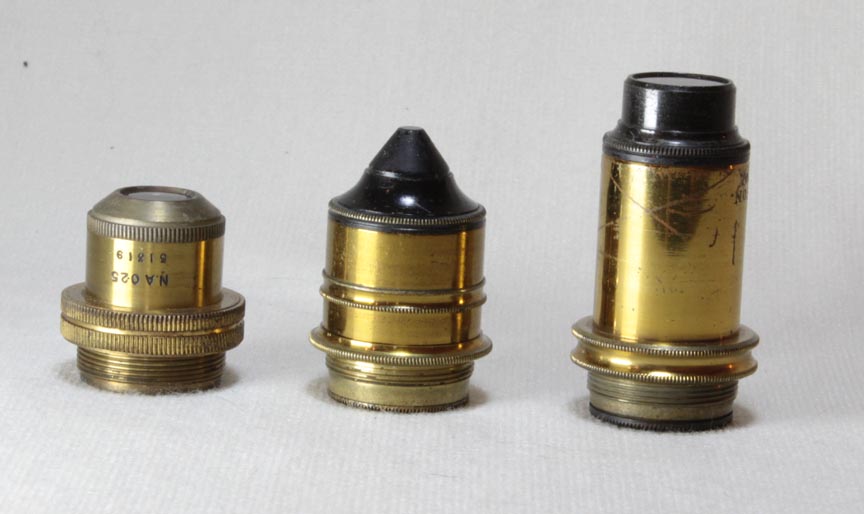
In addition to the one inch Swift objective for use as a condenser there are also a 2 inch and a 1/2 inch Swift objective with this microscope. There is no case with it however.
HISTORY OF THE SWIFT 'WALES LIMB' MICROSCOPES AND THE SIDE FINE ADJUSTMENT
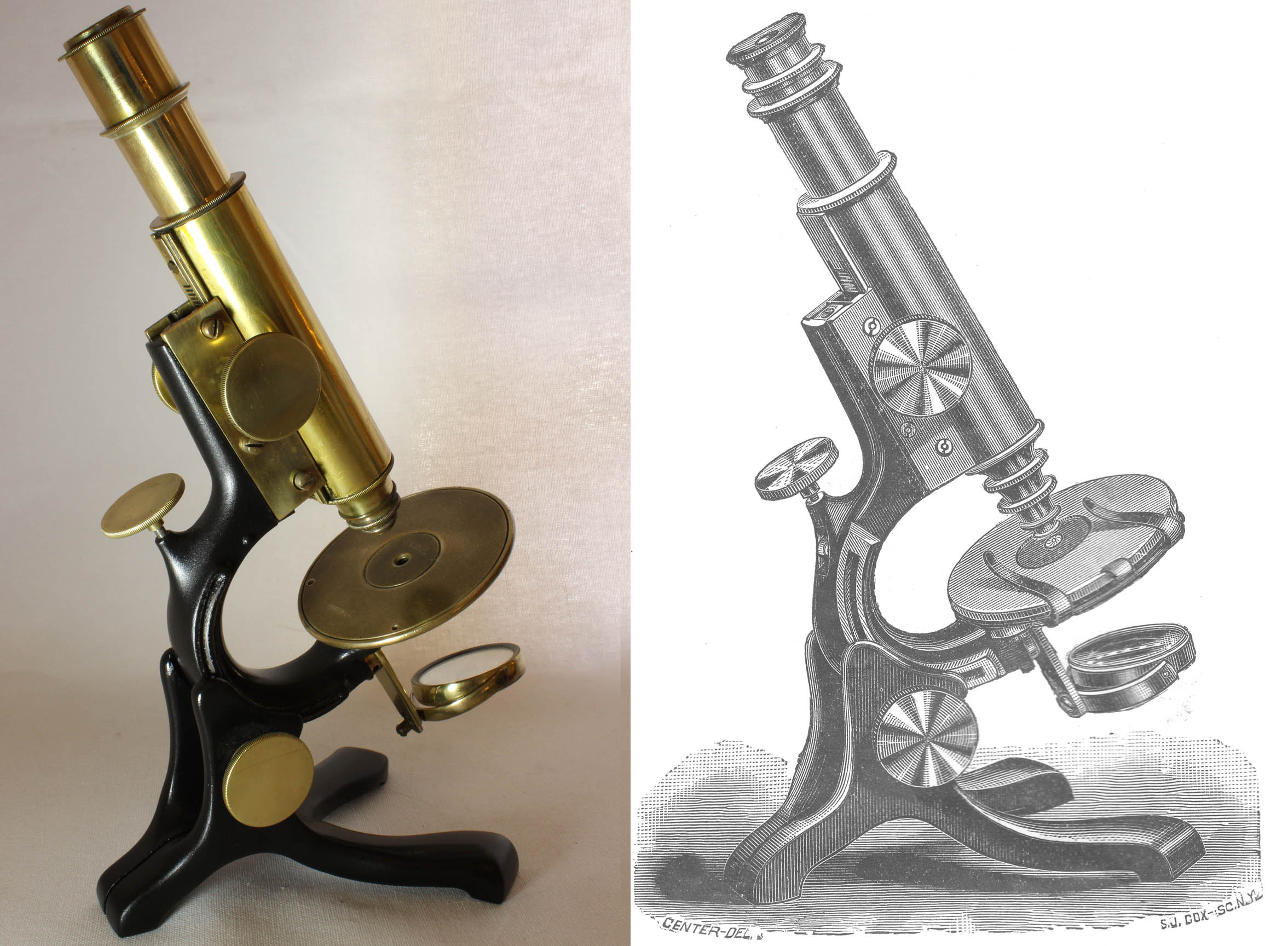
The American microscope maker George Wale invented the grooved inclination system which bears his name about 1879. The first illustration of it that I am aware of was published in the American Journal of Microscopy and Popular Science, Vol 4, No 4, Page 93 (1879). In the same year an illustration of its stage was shown in the J. of the RMS, vol II, p624. This illustration, although clearly showing a portion of the Wale limb, accompanied a brief article about rotating stage clips for Wale's stage. The first article in the JRMS fully illustrating the Wale New Working microscope
was in 1880, Vol 3, page 1046.
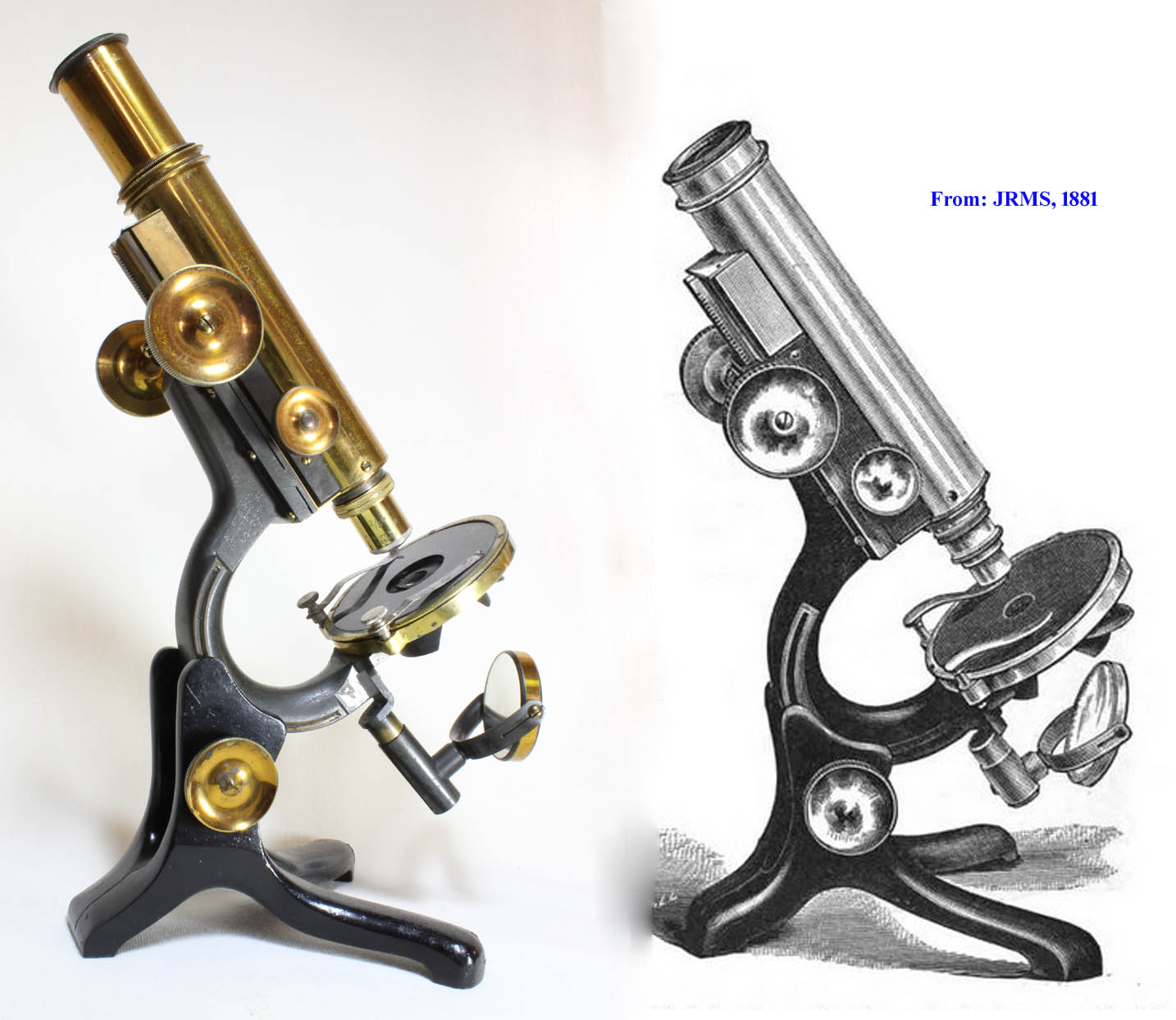
Only one year later, in 1881, the JRMS featured an image of the Swift microscope number 313, showing that the English makers were 'swift' to adopt this design! Swift was so impressed with this design, that, according to
Davis as of 1889,
they intended to feature it as their primary type of limb; it was therefore available in many models up to and
including Swift's biggest Wale limb microscope he called the 'Paragon' Featured above on this page and even much later models of the 20th Century (see below). The advantage of the Wale limb is that the center of gravity, and therefore the stability of the microscope, did not change regardless of the angle of inclination. Swift's versions are an improvement over Wale's design, for more than one reason. First, because in Wale's case the limb groove was just part of an iron casting it did not move smoothly in the groove; in Swift's examples
this groove was machined into the oxidized brass limb for smoother operation. Secondly, Swift's design allowed inclination throught the optical axis of the specimen on a slide, meaning that inclination would only change the obliquity of illumination if a source independent from the microscope was directed on the specimen. This led to an increase in experimentation (and popularity) of oblique illumination. No Wale limb microscope is listed in the 1880 Swift Catalog, further confirming its introduction to 1881.
The Wale method of inclination was also incorporated by many other makers both in the U.S.A. and England, including Schrauer, Bausch & Lomb (in their 'American Concentric Microscope'), Watson & Sons, and the ultimate version, the Wenham 'Radial' Microscope by Ross. The Ross Radial microscope provided many adjustments to provide virtually any kind of oblique illumination. Similar elaborate 'radial' arrangements were also made by Beck, Watson, and many other makers, but it was Swift who apparently continued to make Wale limb microscopes longer than any of the other makers, even into the 2nd quarter of the 20th Century.
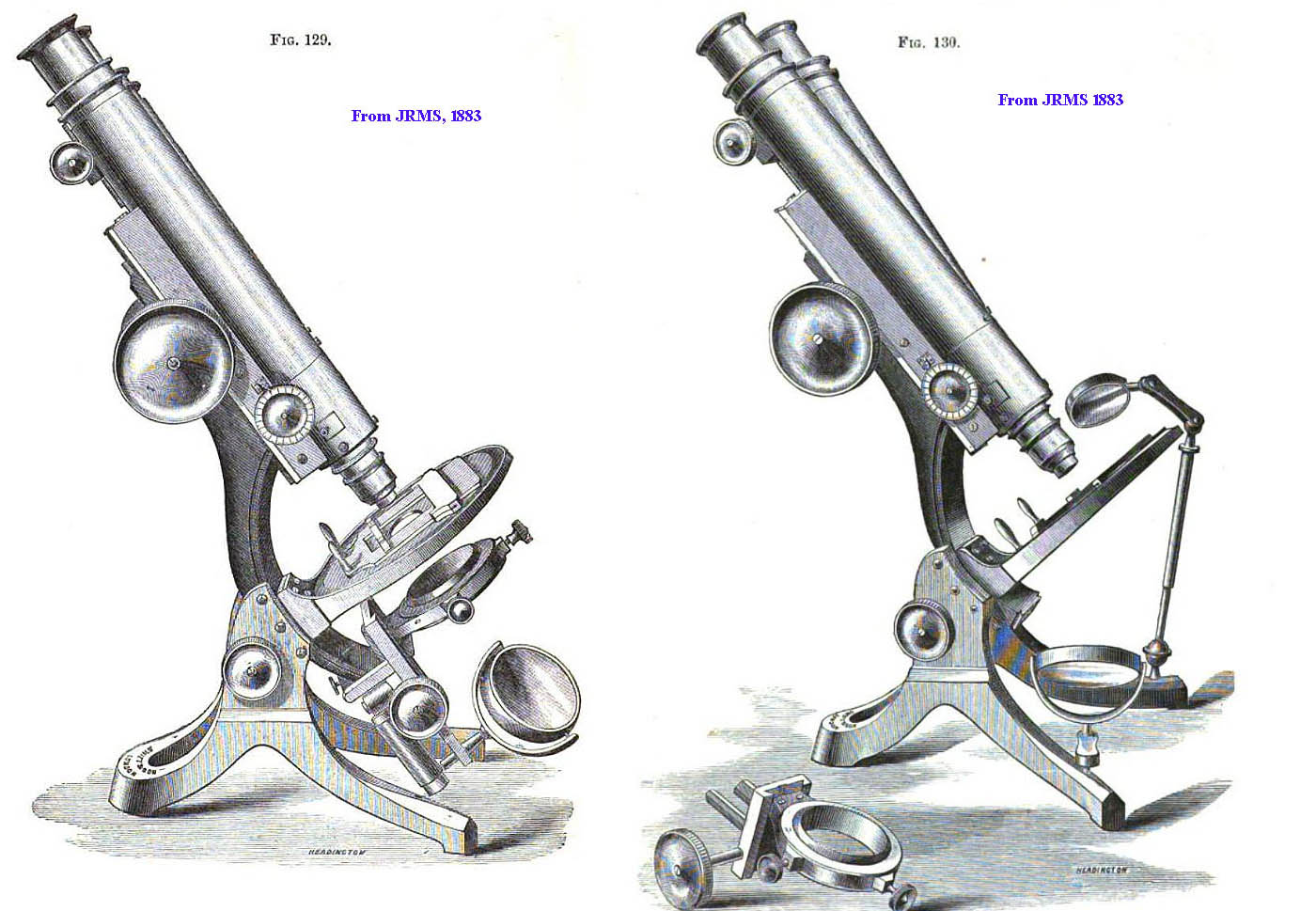
In 1883 a new version of the Swift Wale limb microscope referred to as the Radial and Inclining
Microscope was figured and reported in the JRMS, pp704-706, and then in the November issue of the English Mechanic and World of Science.
Improvements over the original simpler model included:
1)Making the axis of rotation radial
with the object on the stage so that light directed on the object would remain on the object during any degree of inclination.
2)To complete this function, they also provided holes in the front of the foot to allow the mirror (for substage illumination), or the bullseye condenser (for above-stage illumination) to remain in a fixed position during inclination.
3)The stage had no attachments to its bottom so as to allow a thin stage and therefore more facility for oblique illumination.
4)A rack and pinion focusing substage was now provided, fitting into a dovetail fitting fron the front which could be removed by pulling it off in the forward direction. The mirror tailpiece was attached to the back of this removable substage and so was removed at the same time.
5)The rim of the attachment of the limb is widened where it attaches at the stage providing increased firmness, as described by Tolles in 1881 JRMS and used by Bulloch and many others.
6)It had a glide-stage in which the slide sat on a holder which could be manually pushed around the stage. This was the first Wale limb illustration showing 3 screws in the uprights which rode in the inclination groove. I have not been able to locate any photograph of a surviving example of this form of Wale Limb microscope by Swift.
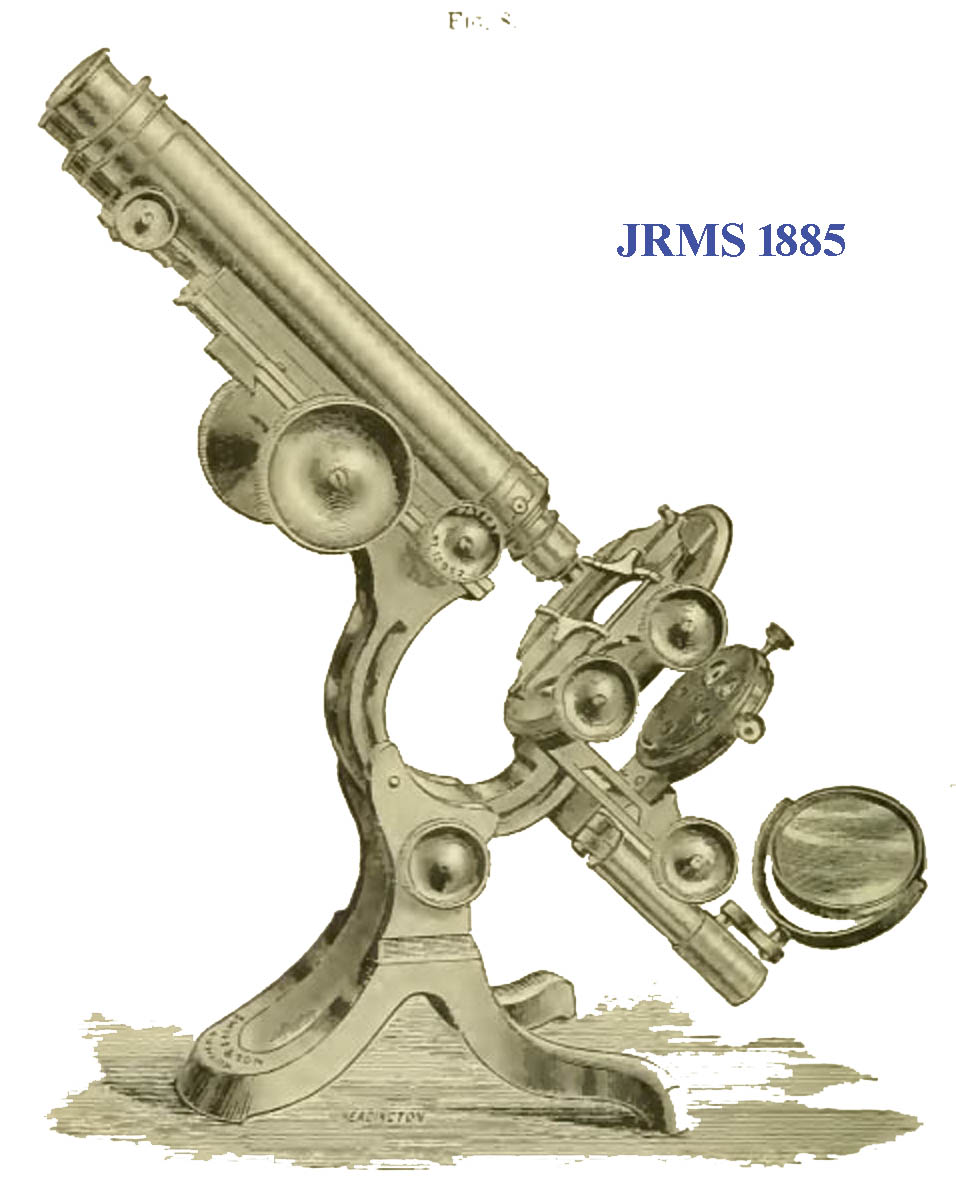 In 1885 a newer model now called the
In 1885 a newer model now called the Improved Wales Limb
was described and pictured in the JRMS, pp 119-122. The new features included:
1) An increase in the length of the radial inclining limb allowing complete rotation of a mechanical stage if desired.
2)The fine adjustment, instead of acting only on the nosepiece, now acted on a slide moving the entire tube; this provided a more reliable design, and also allowed the Wenham prism of binocular models to be about 1/4 inch closer to the rear surface of the objective. .
3)Double stepped
coarse adjustment as suggested by Mayall
4)An alteration in the shape of the foot so that when the instrument is in the vertical position, the mirror is allowed free lateral play.
Options for the Improved Wales model included the binocular tube, the mechanical stage and the rack and pinion substage. This design was the one used for the Improved Wales Limb model for many years afterwards, and as disccused below, in a larger version for the Paragon Model.
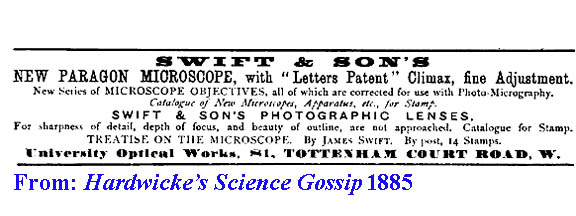
In the same year of 1885, the New Paragon Microscope
, a larger version of the Improved Wales Limb model, was advertised in Hardwicke's Science Gossip(left).
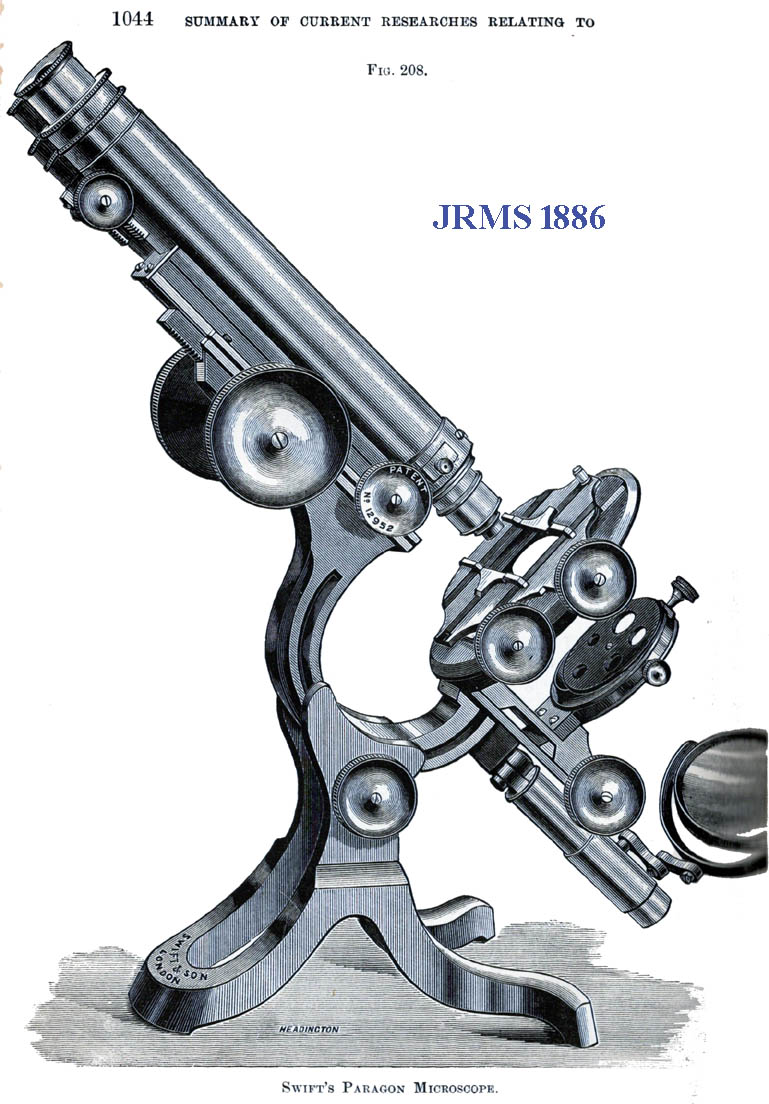
But in the JRMS, the first mention of the Paragon model
was in 1886 on pages 1044-1046, where the same illustration as the Improved Wales
model in the Journal from only a year earlier was used. Interestingly, other than an additional image showing the mechanics of the fine focus mechanism, as described previously for the Improved Wales Limb, the engraving and description does not point out any difference from the Improved Wales Limb noted only one year earlier-apparently neglecting to note it was a a larger version of the already described Improved Wales model.
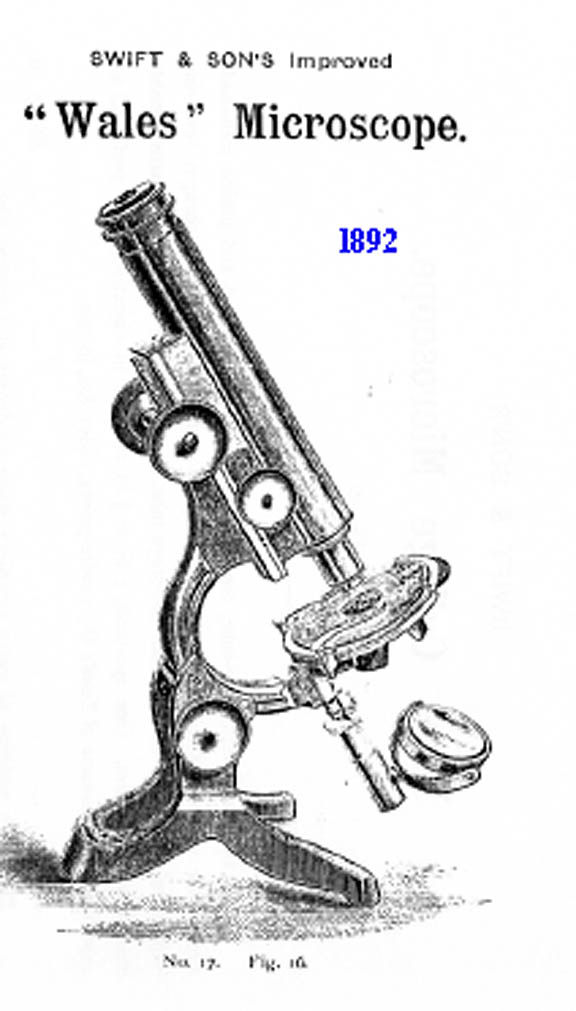
In the 1892 catalog the same image of the Paragon as shown in the JRMS of 1885 and 1886 was still being used, the original form of Wales Microscope
was pictured and labeled Improved 'Wales' Microscope
(!) but no mention of the other Improved Wales
was given. At this point one might conclude the Paragon and what was previously called the Improved Wales models were the same.
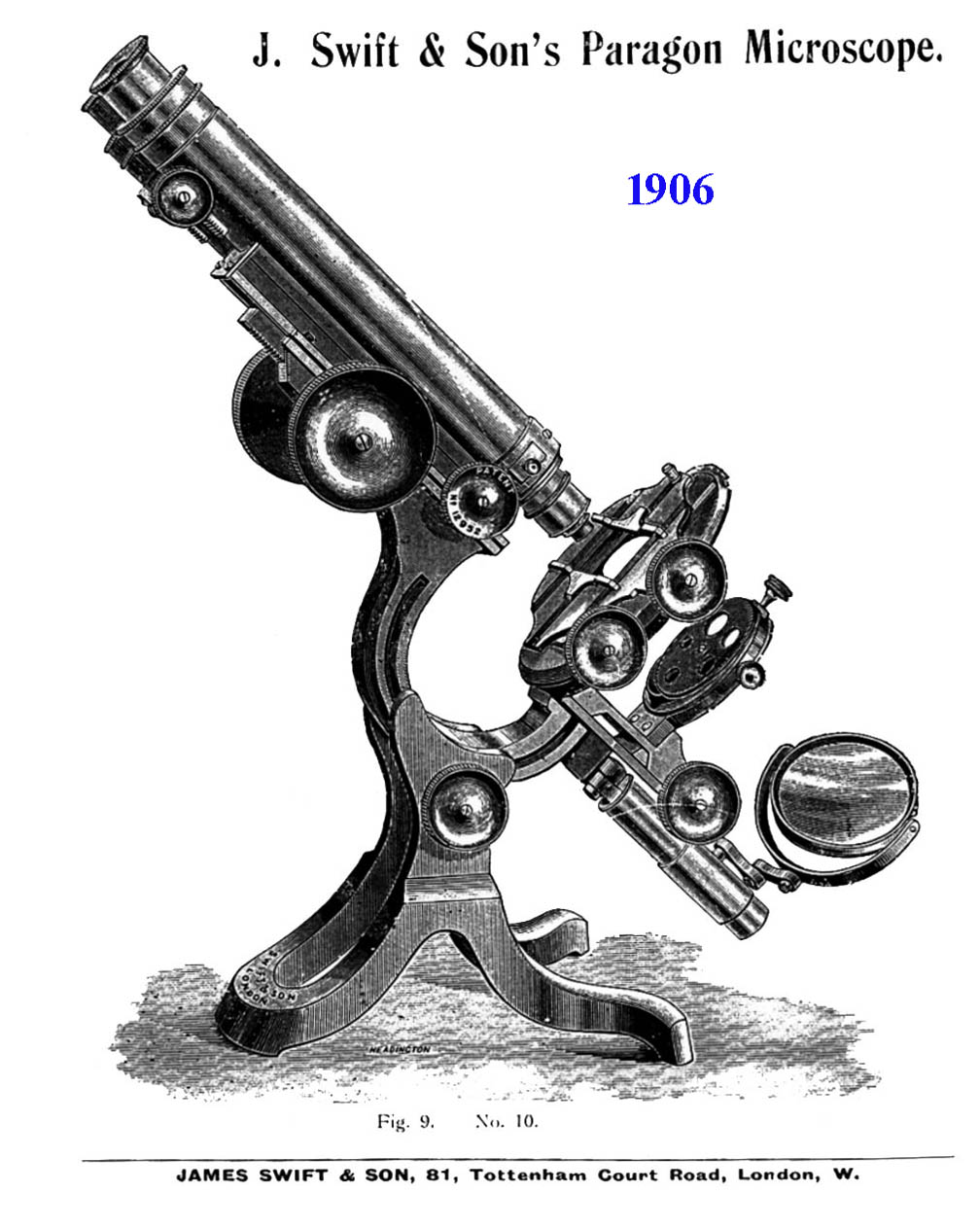
The same illustration of the binocular Paragon continued to be used in the Swift catalogs for many years, as shown in the image shown here from 1906. The Improved Wales was again shown in the 1906 catalog with the monocular tube. The mechanical stage and rack and pinion focusing substage were extras.
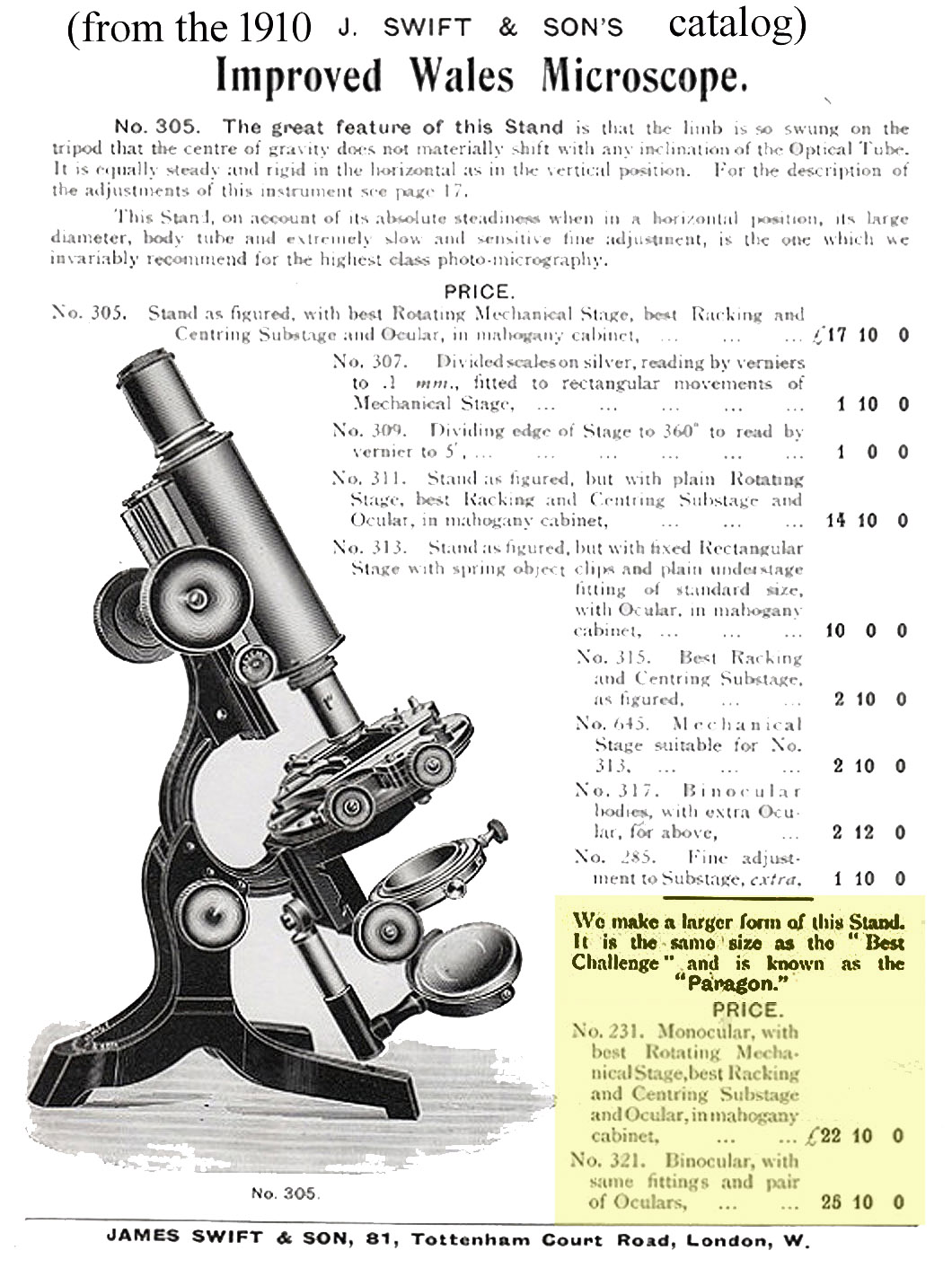

In the 1910 catalog the Improved Wales Microscope No 305
was again listed and illustrated, but now pictured with a monocular tube. It was now stated that the Improved Wales had a rack and pinion focusing substage and mechanical stage standard. It offered other options like concentric fine focusing for the substage.
The Paragon, though no longer illustrated, was still offered in the 1910 catalog:
We make a larger version of this Stand. It is the same size as the 'Best Challenge' and is known as the Paragon.
Because the illustration of the Improved Wales
and Paragon
model never changed except for showing only a monocular rather than the optional binocular tube, it is difficult to differentiate the later form of Improved Wales
model from the Paragon. One way could be that the Improved Wales
is a smaller, at least acording to the 1910 Swift catalog entry. The Paragon had a mechanical stage and rack and pinion focusing substage standard. The Improved Wales, at least for a time, had these as options but later, as noted in the 1910 catalog, these were standard. The absence of a mechanical stage or rack and pinion substage points to identification of an Improved Wales or, if even smaller, the original basic model, especially if with only a calotte diaphragm under the thicker stage. It would seem that at least from 1910, the rear of the foot had a downward pointing toe, but the author has no proof that this was a reliable finding. The only sure way to tell the difference between the Improved Wale and the Paragon is that when both of these is present the Paragon is larger in size and a microscope without a mechanical stage or rack and pinion substage is unlikely a Paragon. It appears in the illustrations the limb is not as thick in the Improved Wales, but this is difficult to judge without the real examples to examine next to each other. Unfortunately, the author has no accurate information on the size of the Improved Wales vs the Paragon.
In summary, Swift started making Wale limb microscopes soon after Wale invented the type. Swift started with a basic student stand similar in many ways to Wale's original but with a machined channel in the limb. This model was apparently continued for many years, while improvements and embelishments were incorporated into the Improved Wale and the Paragon which was larger. The Paragon was offered from no later than 1885 and is noted in the Swift catalogs from 1891 through at least 1910. Options included a silvered scale on the rotational stage movement, and a vernier scale for X and Y motions of the mechanical stage. Other options were binocular tubes, and a concentric fine adjustment to the substage. After being offered for some 25 years or more, by 1913, it was no longer listed in the Swift catalog, but other Wale Limb microscopes were still offered.
OTHER SWIFT WALE LIMB MICROSCOPES
Although the Paragon model was no longer listed in the 1913 catalog, Wale limb microscopes were produced by Swift into the 1920s at least. These included the Premier
, Symposium
, and Photographic Petrographic
models.
It appears that the Swift Wale-limb microscopes were offered from no later than 1881* and continued in some form or another through the 2nd quarter of the 20th century. In 1914 a more complex version of Wale limb was offered on the elaborate Swift 'Photographic Petrological Microscope'. This tradition continued in the even later (c. 1925), and equally elaborate,Symposium' Model
.
THE PARAGON COMPARED TO SMALLER WALE LIMB MICROSCOPES:
The Paragon is the largest Wale Limb models as shown in the images here which include the original Wale's model, the later version by Bausch & Lomb, and the 1881 Model Wale's Limb by Swift:
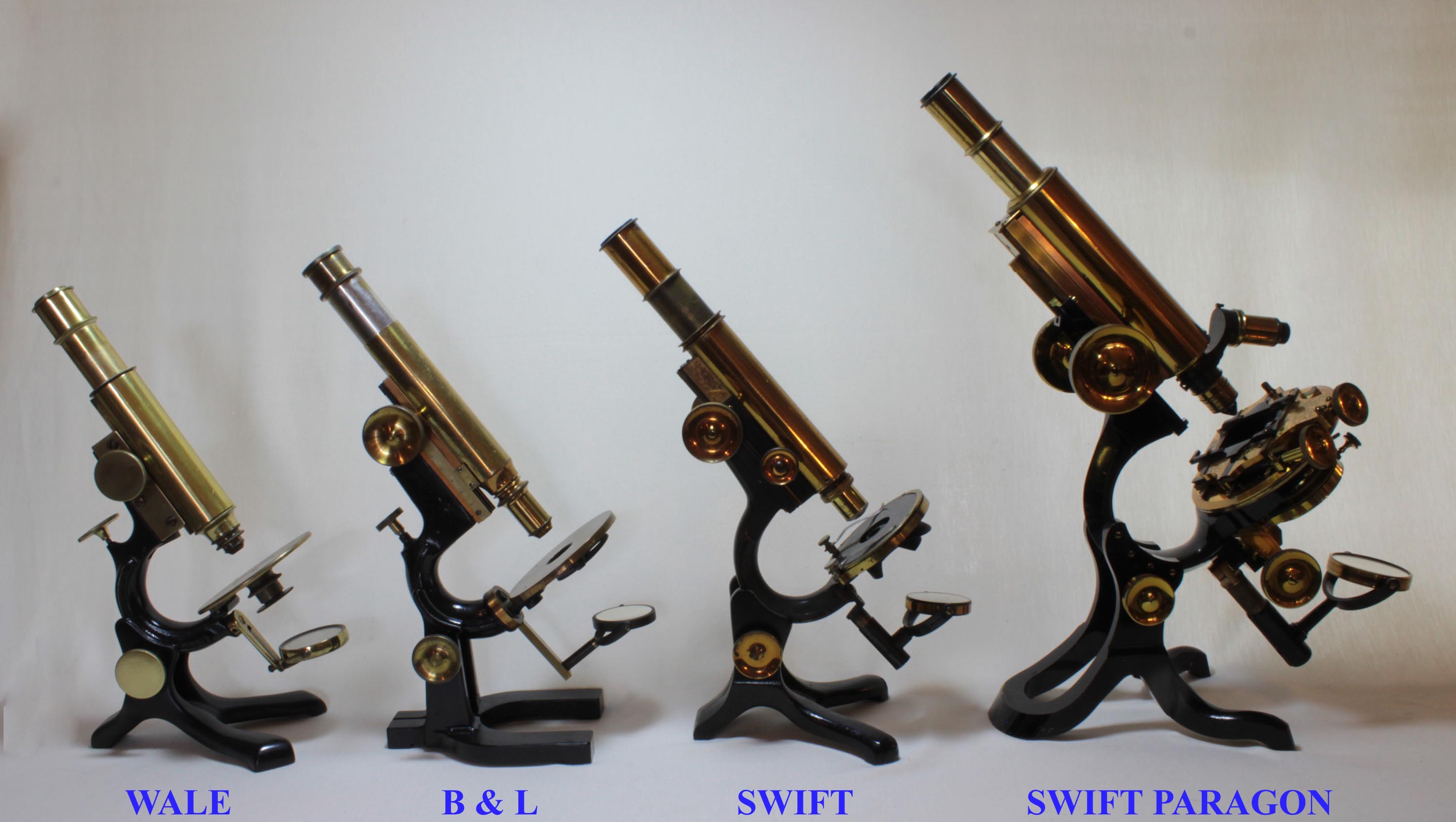
*See the JRMS, Series II, volume I, 1881, pages 296-298.
THE SWIFT CLIMAX
FINE FOCUS:
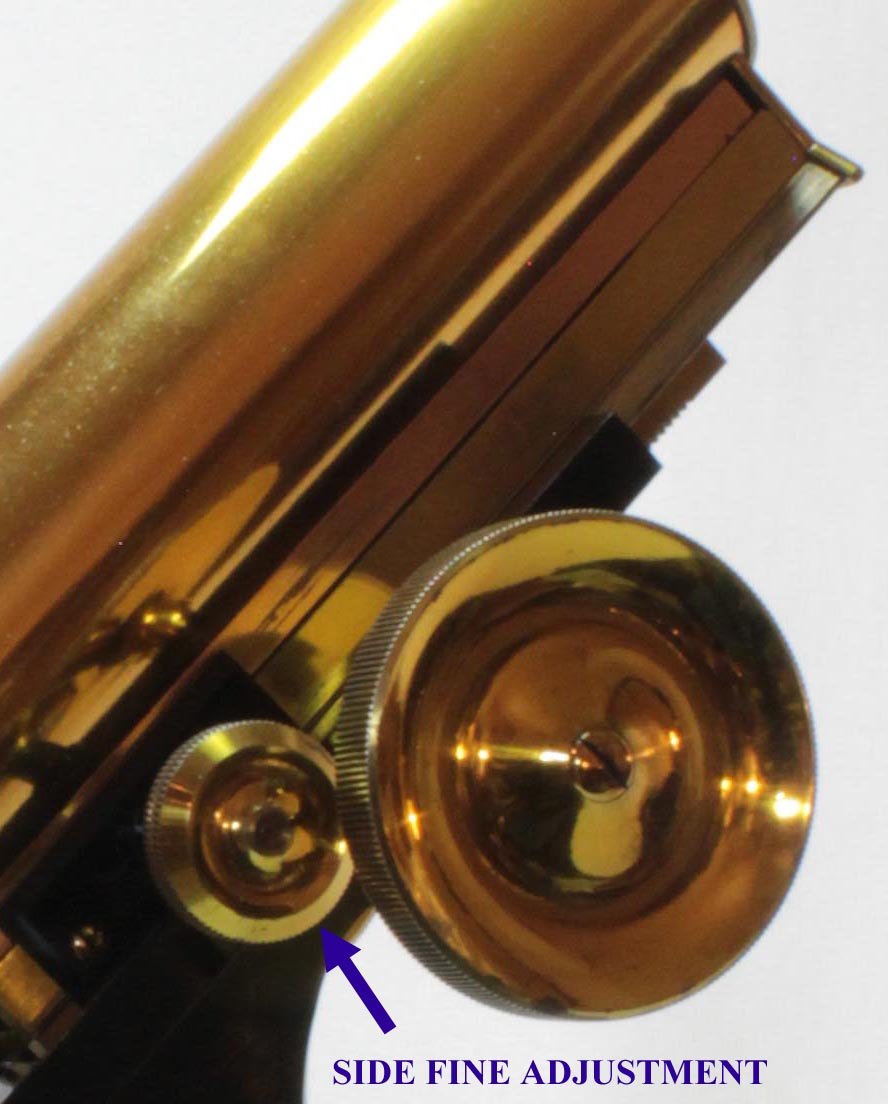
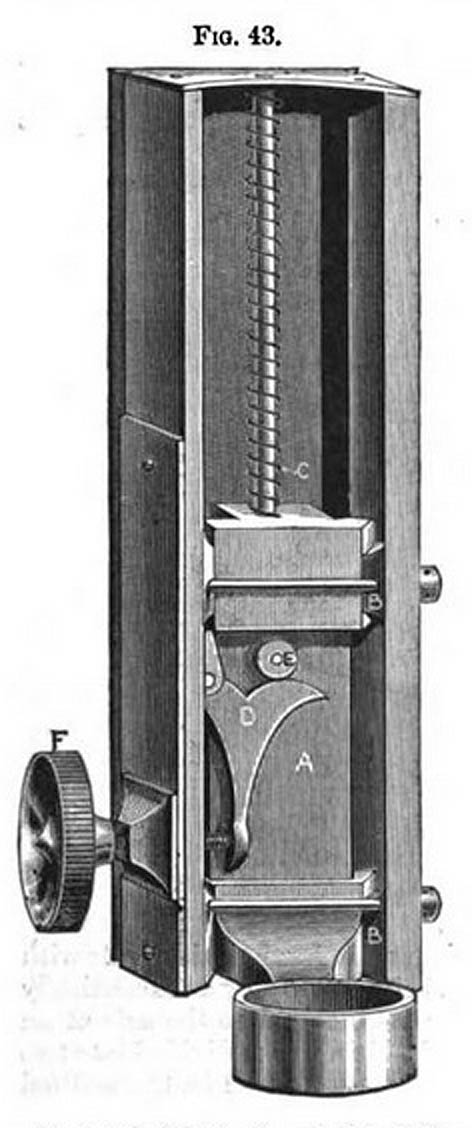
Another feature of this microscope is Swift's invention of a vertical long-lever fine adjustment, controlled from the side of the microscope. Control of the fine focus from the side rather than the top of the limb or the tube itself (as were customary before), later became a standard feature of the modern microscope. The idea of fine focus control from the side was probably first used on Powell and Lealand's early stands, although they soon changed its location to the top of the arm because their side-acting designs which used a wedge, often led to failure of the mechanism. It was Swift in England, and Berger in Germany who revived this idea with much more reliable designs. Swift called theirs the Climax fine Adjustment
. In the case of the first Wale limb microscopes by Swift, this acted upon the nosepiece only but later on the entire tube in a separate slide in front of the course adjustment slide.
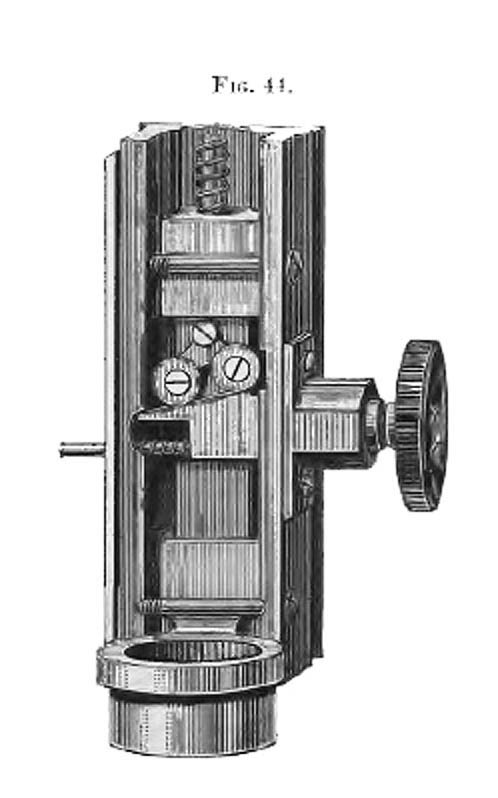
The Climax fine adjustment went through more than one iteration and here is shown an improvement from 1883 published in the JRMS to be used with higher priced microscopes.

In 1886 the version being using with the Paragon at that time was noted in the JRMS.
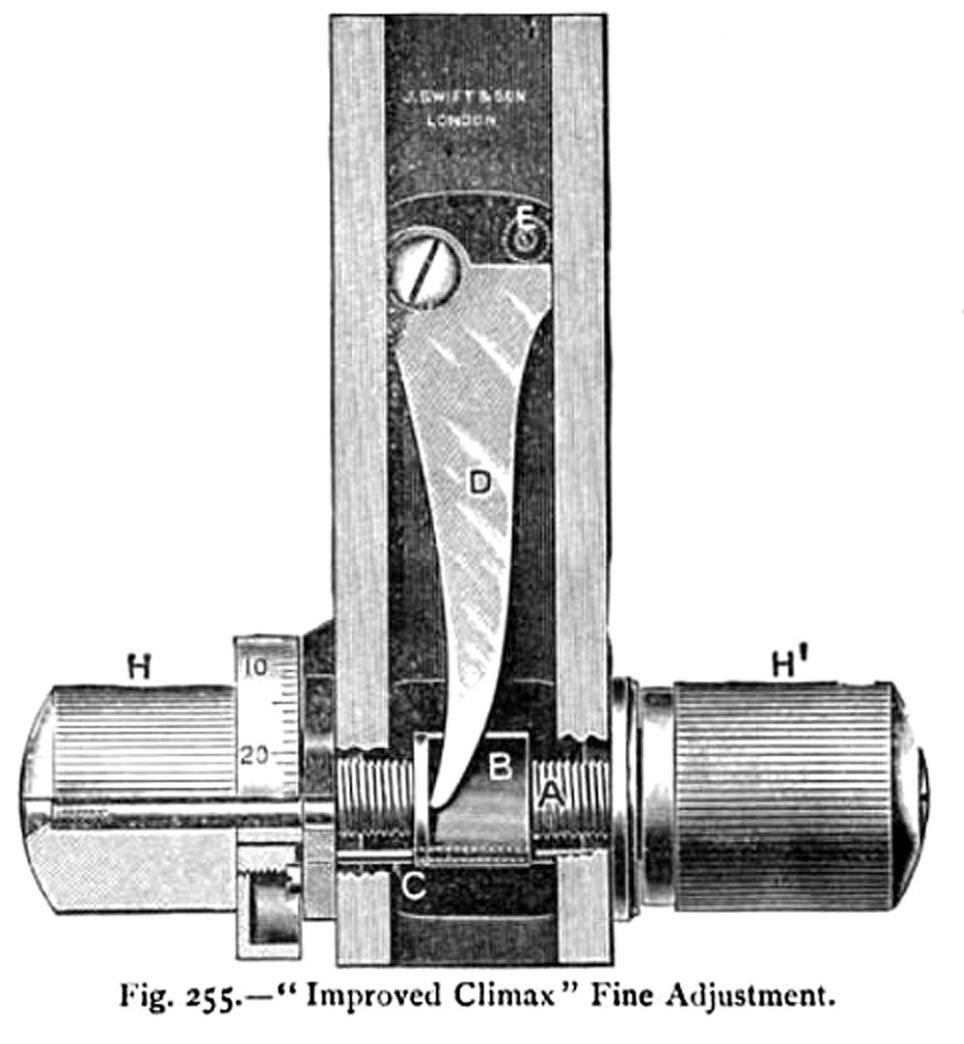
A later version of the Swift side fine adjustment was called the improved Climax
. It was calibrated so that one division on the rotation moved the fine adjustment only 1 micron (0.001 mm). This later version had the knobs elongated and on both sides as seen in the illustration to the left. Berger's design is also illustrated on this site.
The author would like to gratefully acknowledge the kind assistance of James Solliday and Dr Joe Zeligs for valuable catalog information, and advice about the discussion of this instrument.
CONDITION:
This microscope is is superb working condition including the large form of Universal condenser which is complete with all its inserts. There are tiny losses of the black finish on the foot and some minor damage to the lacquer on some of the knobs.
 This Wale limb microscope, which is well made, is supported by a special foot in which the grooved limb glides
for inclination. The microscope can be clamped at any degree of inclination via a knurled knob on the right side
of the foot. The foot is actually one part as opposed to many other smaller Wale limb instruments (including the original) that have two parts grasping the microscope limb between them. The grooved limb slides between two sets of four points, the depth of which is controlled by screws on each side of the support of the foot. The shape of the foot provides extra clearance under the stage for ease of manipulation of the substage apparatus. The foot is signed
This Wale limb microscope, which is well made, is supported by a special foot in which the grooved limb glides
for inclination. The microscope can be clamped at any degree of inclination via a knurled knob on the right side
of the foot. The foot is actually one part as opposed to many other smaller Wale limb instruments (including the original) that have two parts grasping the microscope limb between them. The grooved limb slides between two sets of four points, the depth of which is controlled by screws on each side of the support of the foot. The shape of the foot provides extra clearance under the stage for ease of manipulation of the substage apparatus. The foot is signed 




 In 1885 a newer model now called the
In 1885 a newer model now called the 










